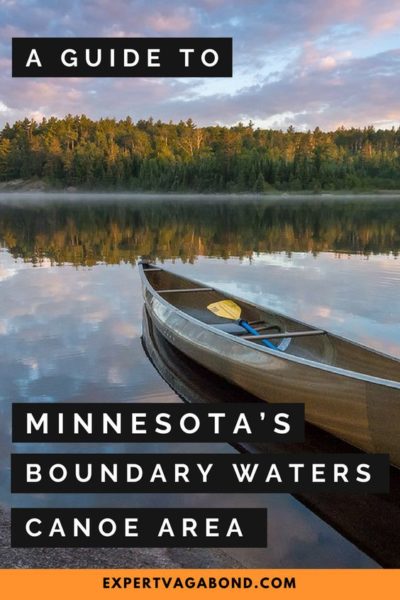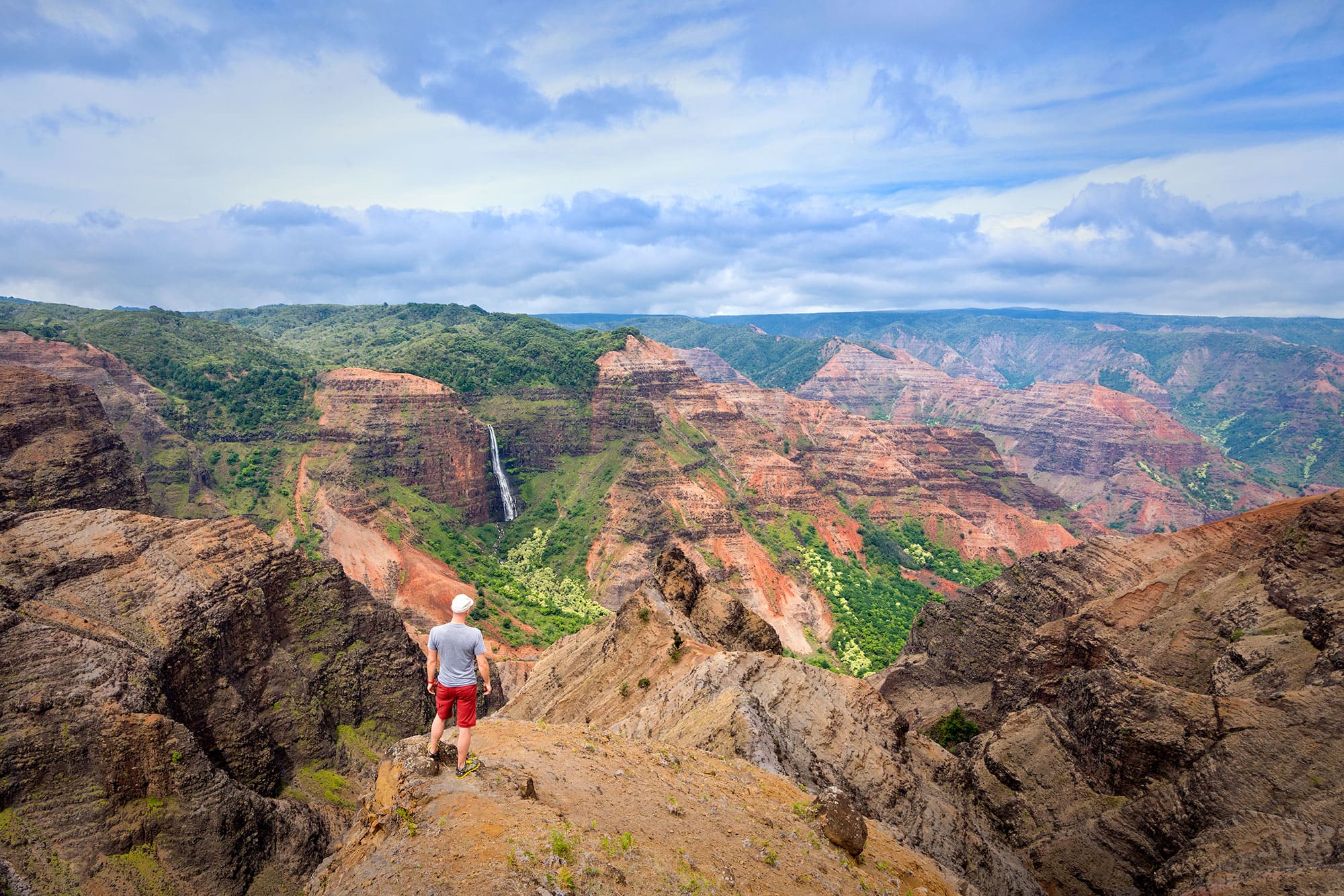
Ely, Minnesota
If you're looking to get away, unwind, and reconnect with nature, you really can't beat a backcountry canoe trip into Minnesota's pristine Boundary Waters Canoe Area.
With the wind at my back, I glided effortlessly over the cool lake water with every thrust of my paddle. The calming silence broken only by the lonely wail of a loon swimming close by...
My father & sister were slightly ahead of me, scouting for our first campsite. Our lightweight kevlar canoes loaded with enough food & gear to support us for 10 days in the wilderness.
The Boundary Waters Canoe Area (BWCA) is an outdoor lover's paradise -- encompassing over one million acres of North Woods backcountry and 1000+ scenic lakes.
Part of Superior National Forest, it hugs the border of Minnesota in the United States and Ontario in Canada. This is a summary of our first adventure canoeing the lakes of the BWCA, fishing for dinner, and camping in the forest.
I hope it inspires you to embark on your own journey into Minnesota's Boundary Waters one day!
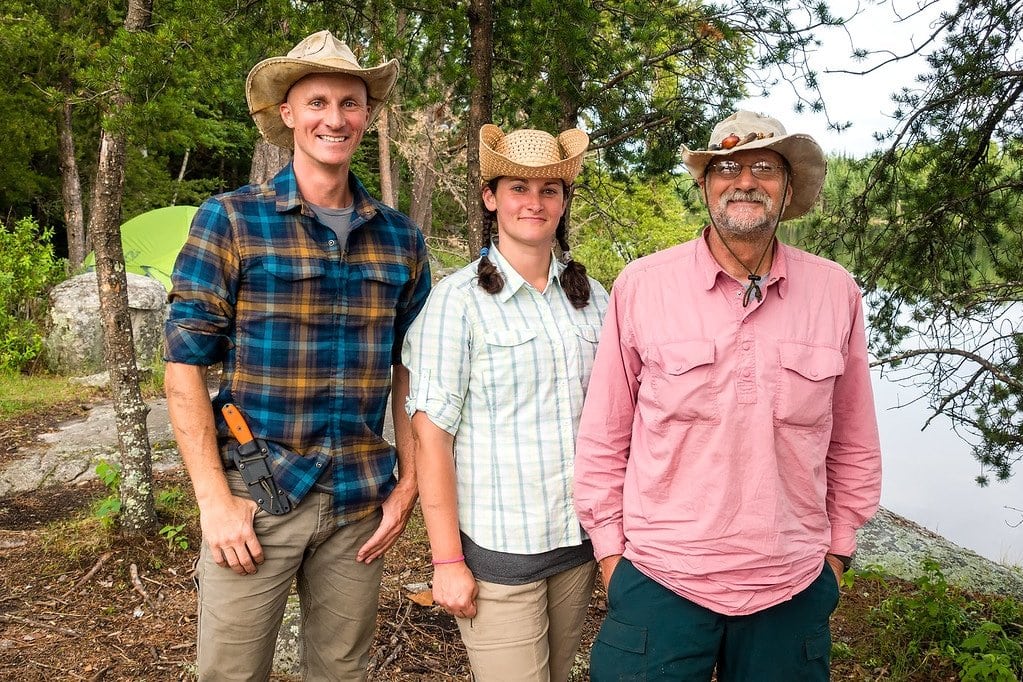
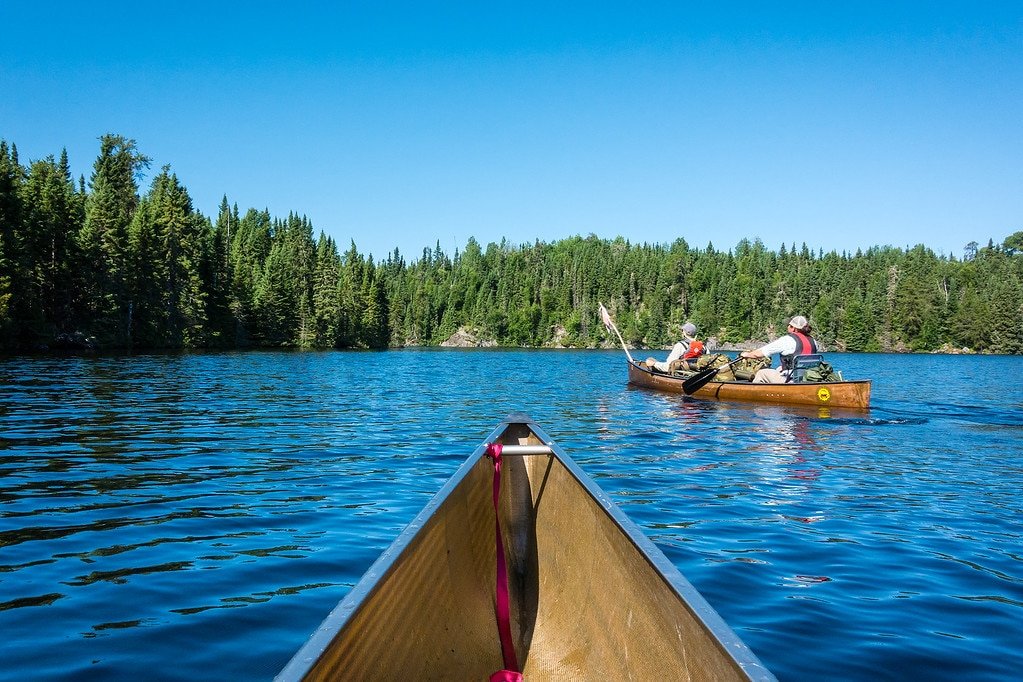
Boundary Waters History
Canoeing, camping, fishing, and hunting have been practiced in the Boundary Waters area for hundreds of years. The Ojibwe and Sioux indigenous tribes called these woods home, traveling the numerous lakes in birch-bark canoes.
Next came French fur trappers and the English-owned Hudson Bay Company, who made fortunes selling beaver pelts caught in the region. Eventually, in the 1900's, the area became a popular recreation destination.
Finally in 1978, after many legal battles, the Boundary Waters Canoe Area Wilderness Act was passed to protect the region from development.
It's one of America's greatest land conservation success stories, and is enjoyed by over 200,000 visitors a year. However because it's so large, the BWCA doesn't feel as crowded as more popular National Parks.
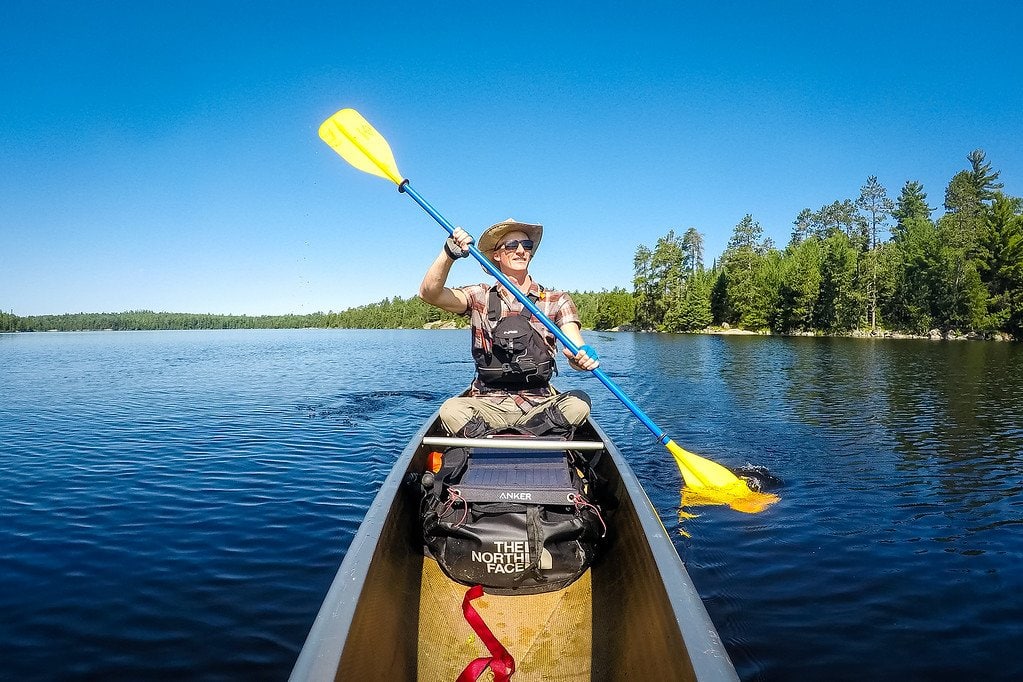


Canoeing The BWCA
In July of 2017, I drove up to Ely, Minnesota along with my father and sister to begin our first "epic" Boundary Waters adventure into the North Woods.
We'd been looking forward to it for months! A way to bring back childhood memories of canoeing & camping together in New England... some family bonding time.
It's also healthy to simply take a break, immerse yourself in nature, and disconnect from the outside world. One of the best ways I've found to recharge your senses, de-stress, and gain some perspective on life!
After packing up our gear the night before at a rented cottage in Ely, we awoke before sunrise, strapped two canoes onto the car's roof-rack, and drove towards Entry Point #23 at Mudro Lake to start our 10 day journey.
Our Boundary Waters Route:
- Mudro Lake
- Fourtown Lake
- Boot Lake
- Fairy Lake
- Gun Lake
- Gull Lake
- Thunder Lake
- Beartrap Lake
- (then back to Mudro the way we came)
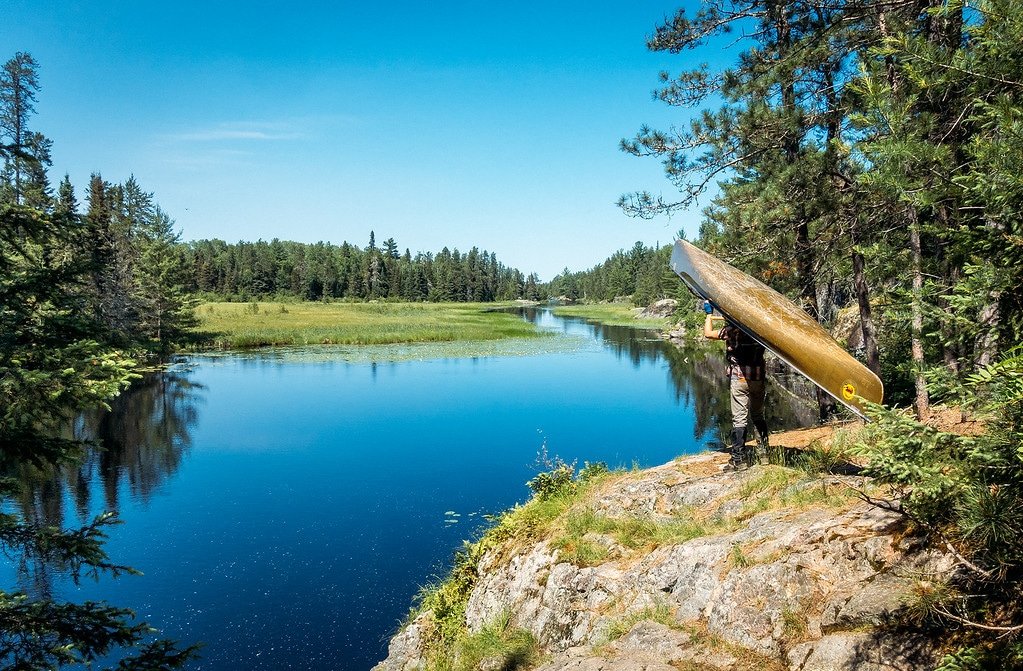
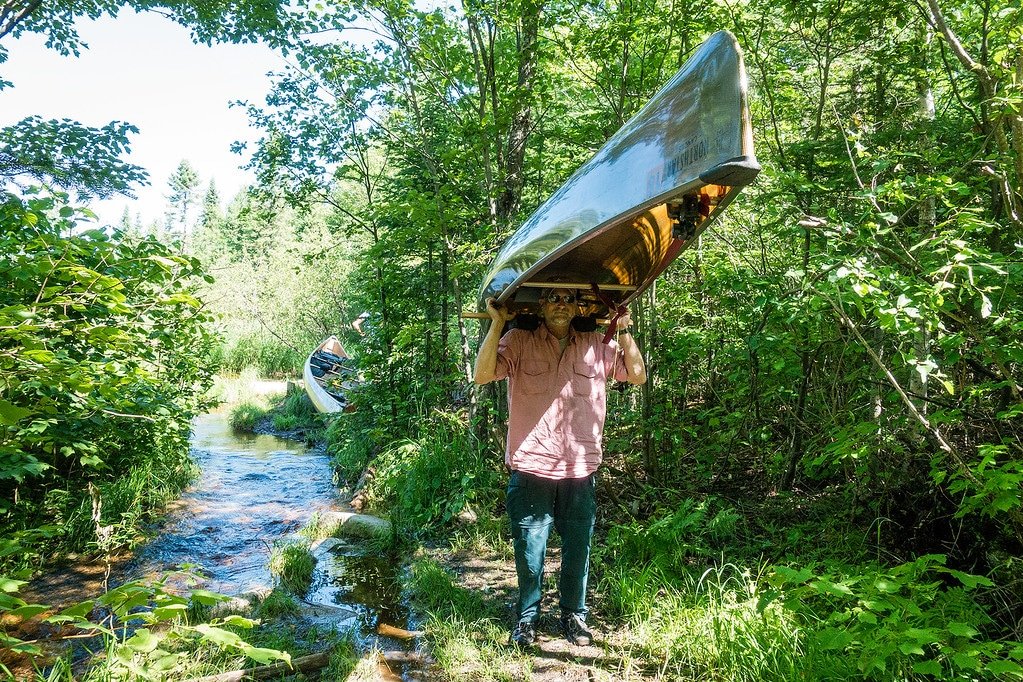
Portaging Through The Forest
If you think a long-distance canoe trip is easy, I've got some news for you. While many of the lakes are next to each other, you still have to cross portions of land to get from one lake to another. This is called a "portage".
Basically, you get out of your canoe, unload it, then take turns hiking the canoe and your gear through the woods to the next lake. Depending on how many people are in your group, and how much gear you have, it could take a couple trips back and forth to get everything over.
Some Boundary Waters portage trails are only 50 yards long. Others can be up to a mile long. And portage trails aren't measured in meters or feet, but in "rods". A rod is about 16.5 feet long, or the approximate length of a canoe.
Portaging can be a nice way to break up the trip -- a chance to stretch your legs and give your arms a rest.
However if the trails are overgrown, steep, or muddy -- or if you hit a series of small lakes with multiple portages over a short time, it gets tiring too.
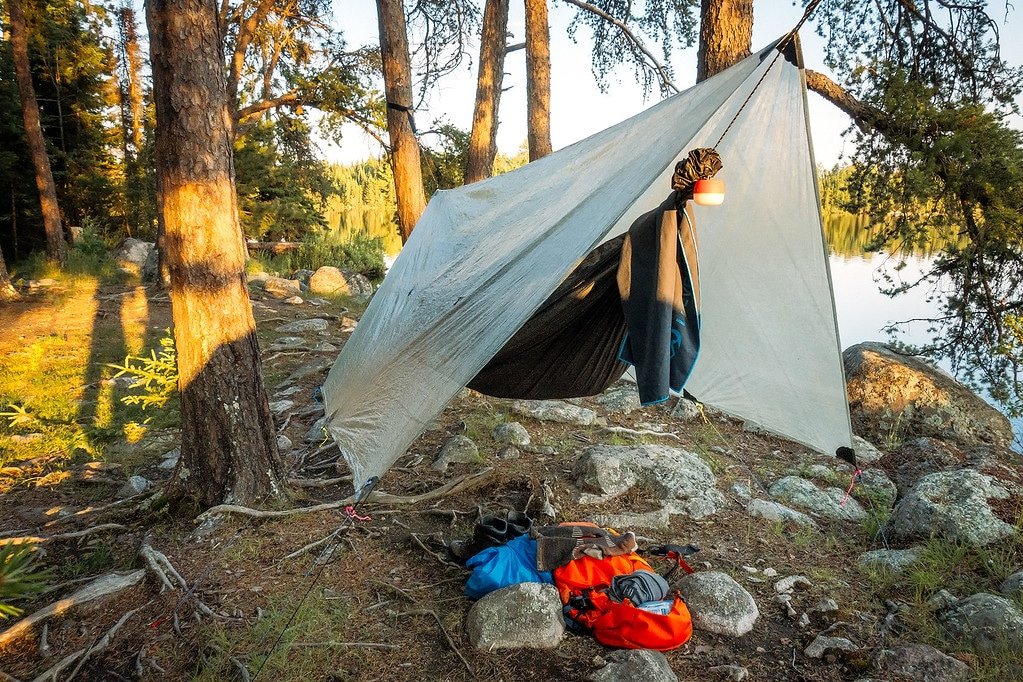
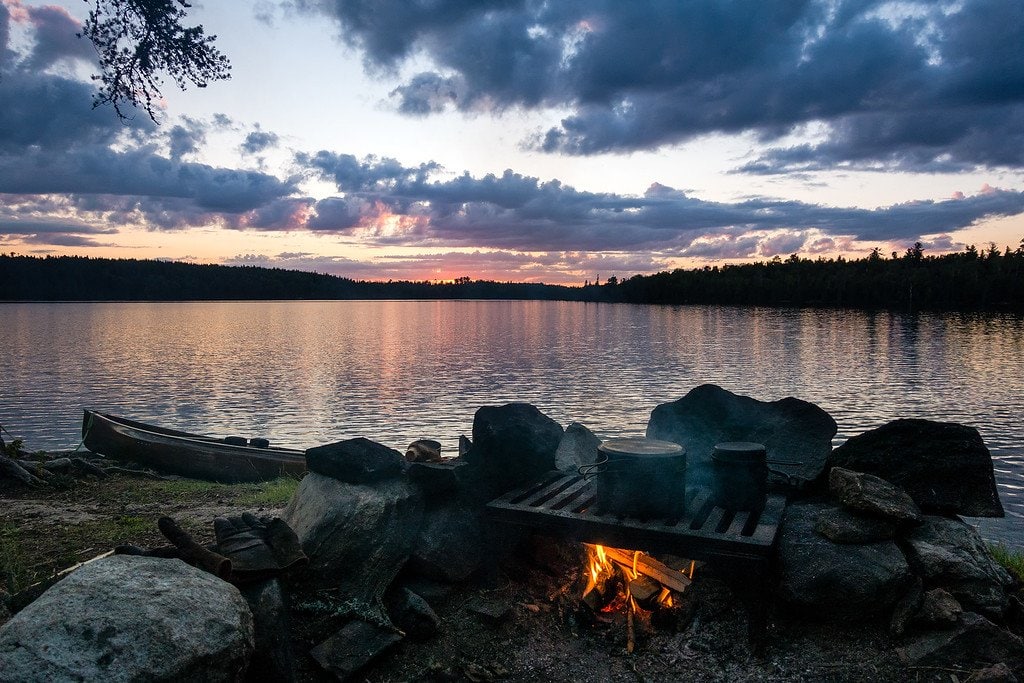

Camping In The Wilderness
Each lake has a handful of designated campsites that are snatched up on a first-come, first-serve basis. They're equipped with a fire-pit, metal cooking grill, and a biffy (open-air camp toilet).
If all the campsites are taken, you must continue on to the next lake and check there. True wild camping is not allowed in the Boundary Waters, unlike on the Canadian side (called Quetico Provincial Park).
Usually we'd pick a good campsite in the early afternoon, set up our tents and tarp, then go fishing nearby. Sometimes we'd stay in the same spot for 2 nights in a row -- in order to relax between travel days.
Gathering firewood was a regular task, sometimes requiring us to jump into a canoe, visit another island, and seek out dead downed trees (white pine, cedar, jack pine). We'd saw some limbs off, load the canoe, return to camp, and cut the wood into smaller pieces.
NOTE: Don't gather firewood from the shoreline, hike in and find dead wood that can't easily be seen from the water as part of Leave No Trace principles.
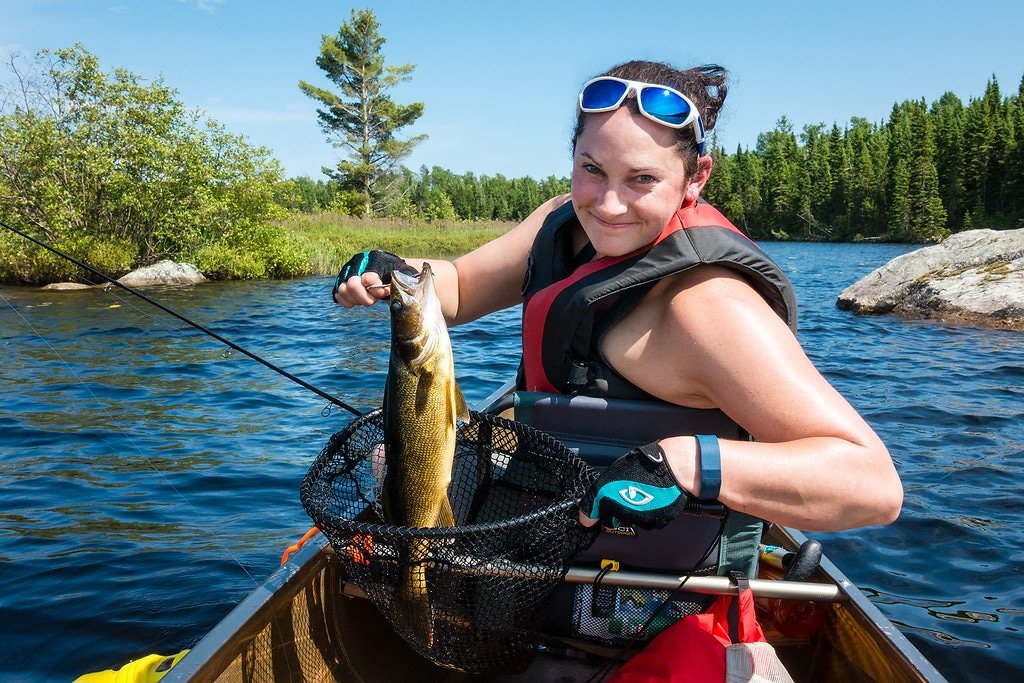

Fresh Water Fishing
Many people take canoe trips into the Boundary Waters for the amazing fishing found there. The fish are plentiful, and large! The most common types are walleye, smallmouth bass, northern pike, lake trout, brook trout, and crappie.
The pristine lakes offer plenty of opportunities for catching fish.
A Minnesota fishing license is required for the Boundary Waters Canoe Area. Licenses may be purchased online here or in person at many local businesses or canoe outfitters.
We caught a mixture of walleye and smallmouth bass using leeches as bait. My sister hooked a northern pike one afternoon, but unfortunately it snapped the line with its sharp teeth as she attempted to reel it in!
When fishing the BWCA, it's important to only keep what you can reasonably eat. That said, we ate plenty of fresh fish for dinner during our journey. Often breaded & fried up with onion, lemon, beans and rice! Yum.
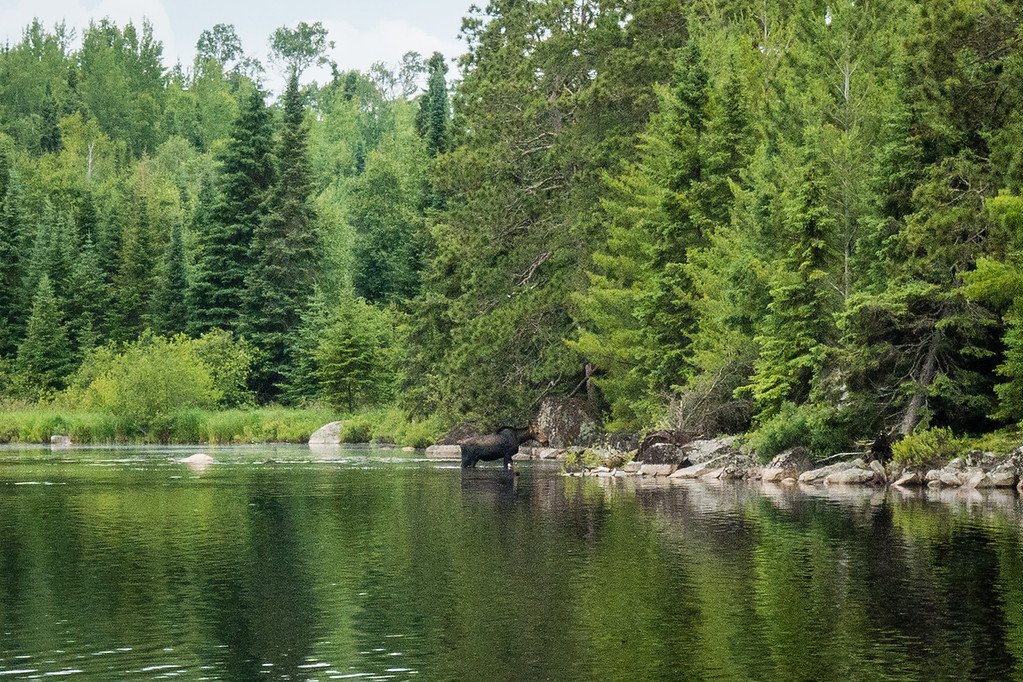

Wildlife Spotting!
One morning, on Gull Lake, we watched from camp as a large female moose came crashing out of the forest and swam across the bay to disappear on the opposite side.
After days of tranquil silence, it was a bit startling! I imagine that's what Big Foot would sound like if he was coming to get you...
Other animals we came across included ruffed grouse thumping the ground to attract a mate, garter snakes, rabbits, loons, bald eagles, and angry beavers slapping the water with their tails as we approached.
Grey wolves, black bears, and bobcats also call the Boundary Waters home -- but are a bit more difficult to spot.

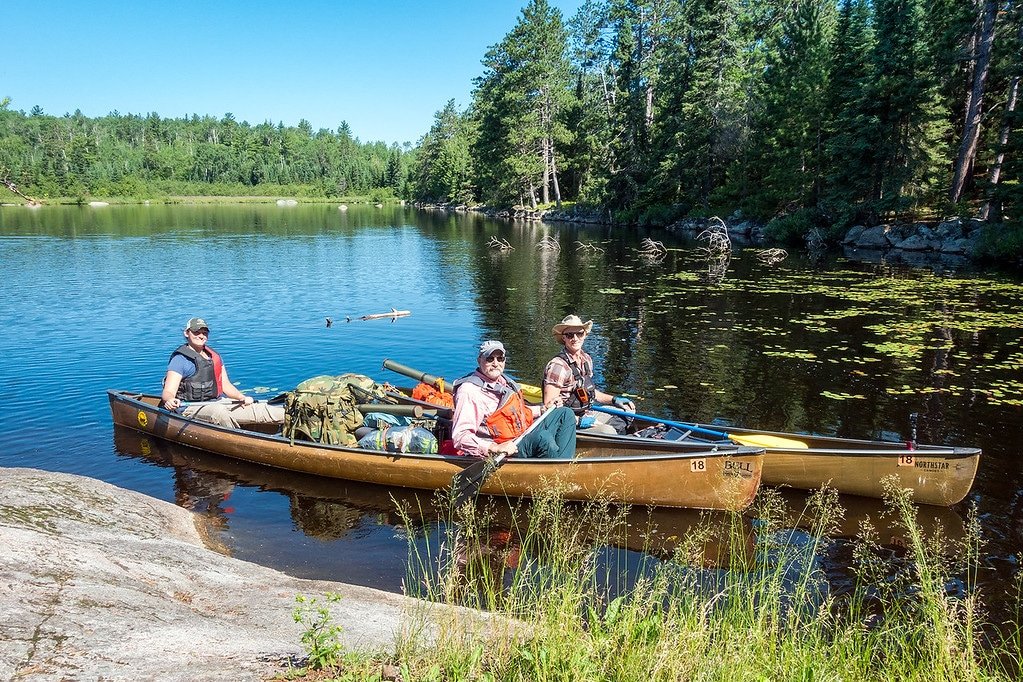
Boundary Waters Tips
Most BWCA visitors "base camp" for a night or two near the entry points. So if you want to find less crowded lakes, you simply need to travel further out into the backcountry.
Even though we were there during the busy mid-July high season, we rarely saw anyone beyond Fourtown Lake.
Beware the mosquitoes! After the sun sets, they're the worst I've ever seen. You definitely want to pack, at a minimum, strong bug spray and a mosquito head net. However a full bug shirt works wonders.
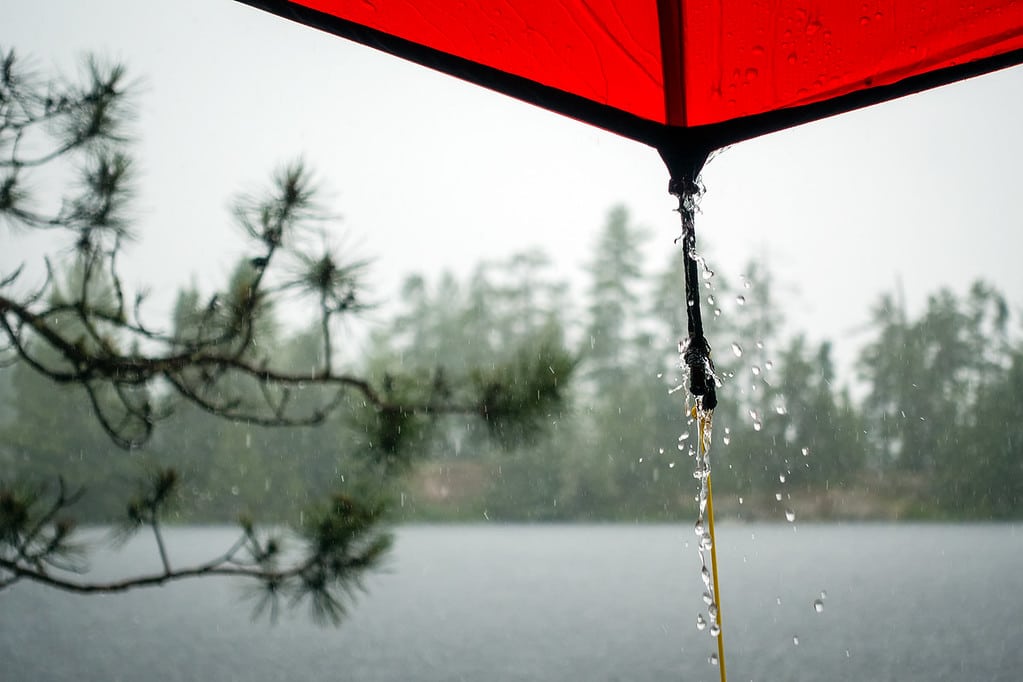
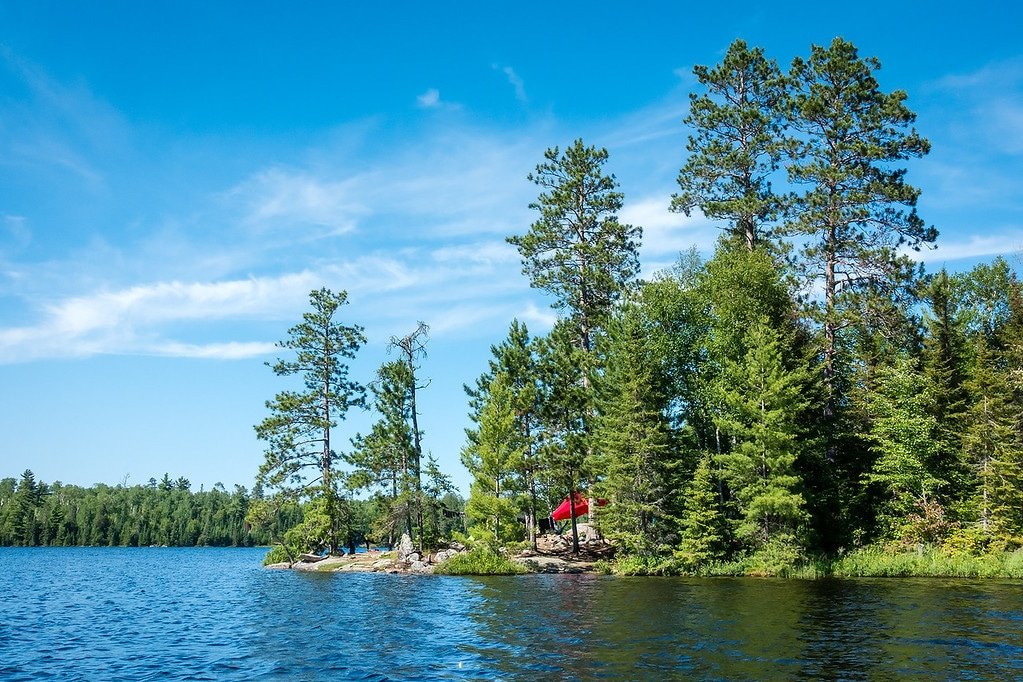
BWCA Permits
To visit the Boundary Waters Canoe Area, you need to buy a permit online. The BWCA is made up of different "entry points" near roads. You buy your permit based on which entry point you want to begin from.
Each entry point only allows a certain number of permits per day, so you'll want to try and book a BWCA permit at least a few months before your trip -- because they can sell out fast.
We began our adventure from Entry Point #23, Mudro Lake. It's a popular one, so we booked our July permit in March. You pick up the permit in person from the closest ranger station to your entry point.
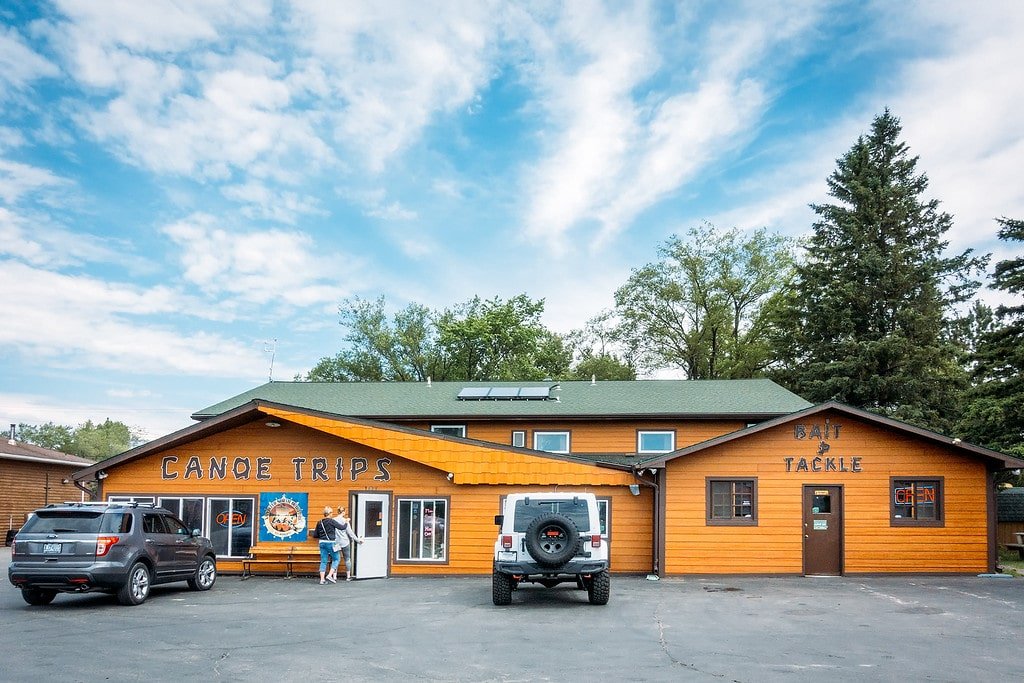
Boundary Waters Outfitters
If you don't have all the gear necessary to canoe the Boundary Waters, it's possible to rent gear from local canoe outfitters. Or even hire a guide to help you with navigation, camp setup, cooking, etc.
While we had most of our own gear, we chose to rent two Northstar kevlar canoes with paddles from Voyager North Outfitters. Highly recommend them!
Kevlar canoes are incredibly lightweight, which makes carrying them on your shoulders during a portage MUCH easier than aluminum ones. ★
Travel Video: Boundary Waters Canoe Trip
Subscribe to my YouTube Channel for new Adventure Travel Videos!
(Click to watch Boundary Waters Canoe Trip | BWCA on YouTube)
| Travel Planning Resources For BWCA |
|---|
| Packing Guide Check out my travel gear guide to help you start packing for your trip. Book Your Flight Ready to fly? Here's how I find the cheapest airline flights. Rent A Car Discover Cars is a great site for comparing car prices to find a deal. Cheap Accommodation Learn how I save money booking hotels & vacation apartments. Protect Your Trip Don’t forget travel insurance! Protect yourself from possible injury & theft abroad. Read why you should always carry travel insurance. |
Enjoy This Article? Pin It!
READ MORE UNITED STATES TRAVEL TIPS
I hope you enjoyed my Minnesota Boundary Waters trip report! Hopefully you found it useful. Here are a few more wanderlust-inducing articles that I recommend you read next:
- The Big Island Of Hawaii Guide
- Why You Need To Visit Asheville NC
- Epic New York City Helicopter Tour
- Hitchhiking Across America
Have any questions about my Boundary Waters canoe trip? What about other suggestions? Join the conversation on Facebook, Instagram, or Twitter to share!



